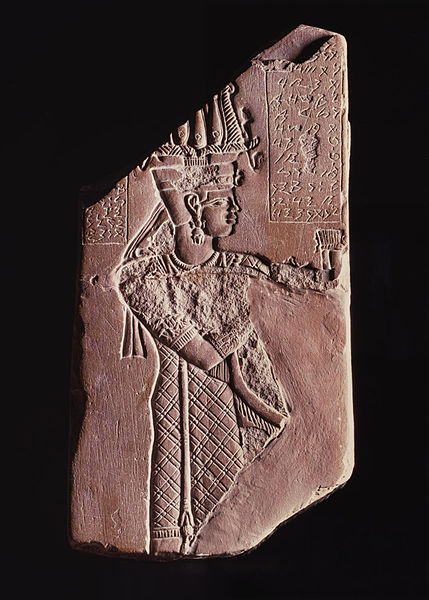The Meroitic language was spoken in Meroë during the Meroitic period and became extinct about 400 AD. It was written in two forms of the Meroitic alphabet: Meroitic Cursive, which was written with a stylus and was used for general record-keeping; and Meroitic Hieroglyphic, which was carved in stone or used for royal or religious documents. It is poorly understood, owing to the scarcity of bilingual texts.
Meroitic inscription (1st century BC), Egyptian Museum of Berlin
A hieroglyphic Meroitic inscription adorns this royal votive plaque of king Tanyidamani. It is from the temple of Apedemak in Meroë. Circa 100 BC, Walters Art Museum, Baltimore.
Meroë was an ancient city on the east bank of the Nile about 6 km north-east of the Kabushiya station near Shendi, Sudan, approximately 200 km north-east of Khartoum. Near the site is a group of villages called Bagrawiyah. This city was the capital of the Kingdom of Kush for several centuries from around 590 BC, until its collapse in the 4th century AD. The Kushitic Kingdom of Meroë gave its name to the "Island of Meroë", which was the modern region of Butana, a region bounded by the Nile, the Atbarah and the Blue Nile.
Pyramids of the Kushite rulers at Meroë, covering a period from 300 BC to about 350 AD
Near East in 200 BC, showing the Kingdom of Meroë and its neighbours.
Karkamani's pyramid (513–503 BC), Nuri
Jewelry found on the mummy of Nubian King Amaninatakilebte (538–519 BC). Museum of Fine Arts, Boston.






